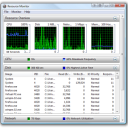
And then Windows 10 Creators Update came out. Along with all kinds of improvements came the reset of all customisation to default settings (ugh!). This included resetting the MIDI output to Microsoft's default and underwhelming "Microsoft GS Wavetable Synth". I found my MIDI Selector tool was no longer completely effective on Windows 10 x64 and had a minor bug as well as some slight inefficiencies. Fixed version 1.0.1 has been posted on the tools page.
Read more



